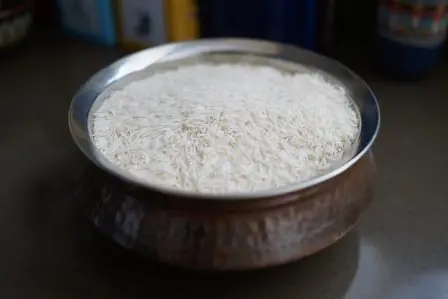PHOTO
Abu Dhabi, UAE: As the most important food crop on the planet, rice plays a critical role in global food security. Following a breakthrough in genome sequencing, NYU scientists are now hopeful that this vital crop can be made more resistant to drought and disease.
The research, partly supported by NYU Abu Dhabi’s Research Institute, was published recently in Genome Biology details the breakthrough, which has been to innovate a new ‘whole-genome’ approach that determines an organism’s complete DNA sequence. In addition, through a collaboration with UK-based Oxford Nanopore Technologies, a third-generation sequencing technology has been developed, that allows long single molecules of DNA to be sequenced more quickly, improving on the completeness and efficiency of the process.
These developments are a significant step forward in the field. Previously, researchers were only able to assemble the genome for basmati rice using ‘short-read’ sequencing. This ‘short-read’ approach, in which DNA is broken into tiny fragments and then reassembled, leads to missing sequences and important gaps in the data.
NYU’s researchers focused on two varieties. The first, Basmati 334 from Pakistan, is known to be drought-tolerant and resistant to rice-killing bacterial blight. The second, Dom Sufid from Iran, is an aromatic long-grain rice that is one of the most expensive on the market.
“This process significantly improves our understanding of the genetics of an organism,” said Lead Scientist and Silver Professor of Biology at New York University, and faculty investigator at NYU Abu Dhabi's Center for Genomics and Systems Biology Michael Purugganan. “For a variety like Basmati 334, which is highly resistant to drought and blight, it means we can identify the genes responsible and work with rice breeders and growers to strengthen these valuable traits. For such a critical global commodity, even a tiny improvement in yields can impact our ability to feed the world.”
In addition to Purugganan and postdoctoral scholar at NYU and the Genome Biology study’s lead author Jae Young Choi, the study authors are Zoe N. Lye and Simon C. Groen of NYU’s Center for Genomics and Systems Biology; Xiaoguang Dai, Priyesh Rughani, Eoghan D. Harrington, and Sissel Juul of Oxford Nanopore Technologies, and Sophie Zaaijer of the New York Genome Center. The work was supported by grants from the Zegar Family Foundation (A16-0051), National Science Foundation Plant Genome Research Program (IOS-1546218), Gordon and Betty Moore Foundation (GBMF2550.06), and NYU Abu Dhabi Research Institute.
© Press Release 2020Disclaimer: The contents of this press release was provided from an external third party provider. This website is not responsible for, and does not control, such external content. This content is provided on an “as is” and “as available” basis and has not been edited in any way. Neither this website nor our affiliates guarantee the accuracy of or endorse the views or opinions expressed in this press release.
The press release is provided for informational purposes only. The content does not provide tax, legal or investment advice or opinion regarding the suitability, value or profitability of any particular security, portfolio or investment strategy. Neither this website nor our affiliates shall be liable for any errors or inaccuracies in the content, or for any actions taken by you in reliance thereon. You expressly agree that your use of the information within this article is at your sole risk.
To the fullest extent permitted by applicable law, this website, its parent company, its subsidiaries, its affiliates and the respective shareholders, directors, officers, employees, agents, advertisers, content providers and licensors will not be liable (jointly or severally) to you for any direct, indirect, consequential, special, incidental, punitive or exemplary damages, including without limitation, lost profits, lost savings and lost revenues, whether in negligence, tort, contract or any other theory of liability, even if the parties have been advised of the possibility or could have foreseen any such damages.











